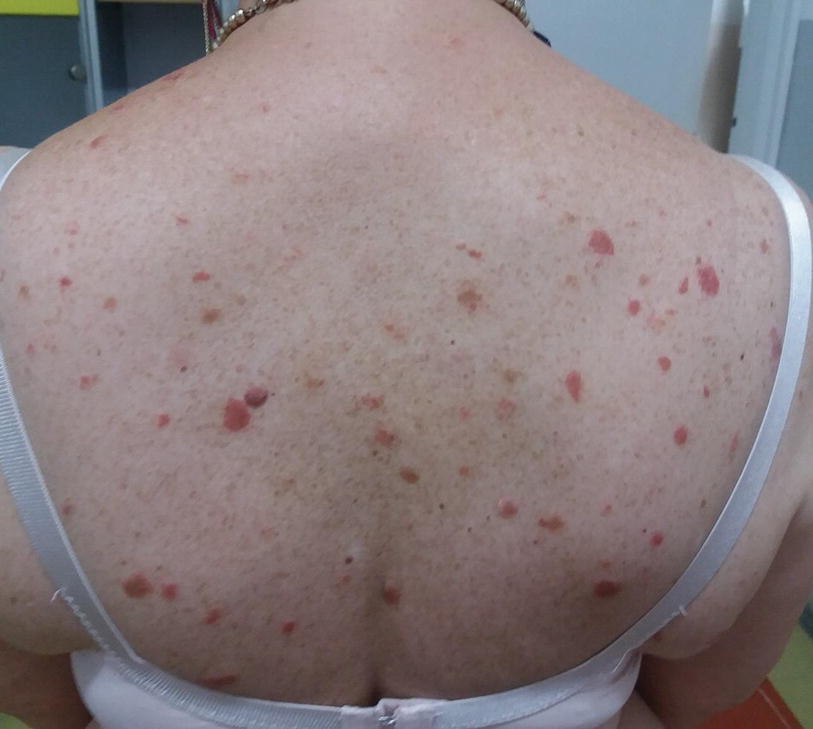
Sarcoidosis
- April 8, 2021
- Posted by Dr. Vaidya Karanvir Singh
- 0 Comment(s)
- Sarcoidosis is a condition in which the growth of persistent or inappropriate granulomas or clusters of inflammatory cells.
- Sarcoidosis can occur in any organ, an estimated 90 percent of cases engage the lungs.
- Recently, there is no cure for sarcoidosis, but some cases resolve without medical intervention.
- Granulomas can harm organs and may require treatment. This may be the case if they start to involve a significant portion of an organ or persist for prolong period.
- Sarcoidosis is a chronic inflammatory condition that results in the formation of persistent granulomas of inflammatory cells.
- Granulomas developed as a normal part of the immune response, but they typically break up after foreign objects have been expelled.
- Sarcoidosis involves the development of granulomas that linger when they are no longer essential.
It may be the result of an extreme immune response to an irritant or allergens, such as:
- viruses
- bacteria
- pollution
- dust
- toxins
There is some evidence to suggest certain people may be more genetically inclined to develop the condition.
Organs involved
- A large of sarcoidosis cases involve or begin in the lungs.
- The lymph nodes and glands, especially being around the lungs, are also impacted. However, sarcoidosis can damage any organ in the body.
- Though less common, cases affecting organs, such as the heart, brain, and kidneys, are often far extreme severe. Also, they can be tough to treat and may cause serious health complications.
Table of Contents
Risk factors
Major population depending on individual factors. These include:
- Race or ethnicity: Rates of sarcoidosis among African-Americans are supposed to be 3 to 4 times higher than white people.
- Age: Sarcoidosis most commonly affects those between 20 to 40 years of age.
- Sex: As with most inflammatory conditions, women are supposed at greater risk of developing sarcoidosis, especially over the age of 50.
- Family history: Those who have family members who have had sarcoidosis are at a major risk of developing the disease.
Symptoms
- The symptoms associated with sarcoidosis can vary drastically between individuals depending on the organ involved and the size of granulomas.
- In acute sarcoidosis, symptoms are present for less than 2 years, and 50 percent of those affected by them will have no symptoms after that.
- In chronic cases, symptoms progress, linger, or recur for weeks or years. The concern with chronic sarcoidosis is the evolution from granulomas to fibrosis in organs, such as in the lungs.
The signs and symptoms of sarcoidosis include:
- Fever
- Exhaustion
- Pain in the joints
- Abnormal sweating
- Wheezing
- Cough
- Weight loss
- Depression
- Cough
- Shortness of breath
- Rashes on lower extremities such as ankles and shins
Lungs
- Chronic dry cough
- Dyspnea
- Wheezing
- Shallow breath – Shortness of breath or trouble in catching the breath
- Unidentifiable chest pain, usually radiating out
Lymphatic system
- Swelling or edema, excess accumulation of fluid
- Pain
- Redness
- Difficulty in swallowing
- Sore throat
- General exhaustion
Heart
- Pain, often radiating out of the chest
- Painting
- Unexplained exertion
- Palpitations with a rapid and fluttering heartbeat
- Irregular heartbeat
- Edema or swelling caused by the accumulation of fluid
- Shortness of breath or difficulty in breath
Eyes
Cases of sarcoidosis that affect the eyes do not usually cause symptoms. This means many go undiagnosed until permanent harm has been done.
- Soreness
- Redness in eyes
- Sensitivity to light
- Blurred or cloudy vision
Nervous System
- Facial paralysis or loss of facial muscle control
- Inflammation in the brain, resulting in seizures and other changes
- Meningitis symptoms, such as headache and stiffness in the neck
- Damage to small nerves of the brain
Skin
- Erythema Nodosum, which is an elevated red rash on the shins and ankles, usually warm and tender to touch
- Nodules or growths beneath the skin, especially around scar tissue
- Skin discoloration, where some areas become lighter or darker than normal
- Lesions or sores, resulting in permanent skin damage and disfigurement, usually on the cheeks, nose, and ears
Joints, connective tissues, bones, and muscles
- Arthritis
- Loss of muscle control, tone, or power
- Loss of flexibility, comfort, or range of motion
- Generalized joint pain
- Generalized weakness and exertion
Diagnosis
Almost 90 percent of all cases are not enough for doctors to be able to diagnose them. Sometimes they may also be undetectable by radiographic devices.
Diagnosis is usually made during examinations for other health conditions, for example, chest X-rays for:
- Pneumonia
- Accidental injury
- Lung cancer
If sarcoidosis is suspected, a doctor will initiate by examining the impacted area and reviewing a person’s medical history.
Additional tests used to diagnose sarcoidosis include:
- Computerized tomography scan
- Positron emission tomography scan
- Chest X-ray to assess lymph node involvement
- Lung function tests to assess lung volume
- Examination of the eyes
- Blood tests to assess organ function or alteration, in particular, measuring kidney enzymes and markers
- Biopsies of involved organ tissues
Complications
- Heart Disease
- Blindness
- Difficulty in breathing
- Kidney damage or failure
- Muscle paralysis
- Skin discoloration
Treatment
Chandigarh Ayurved centre provides a special kit for the management of sarcoidosis, which contains Kapha powder sachet, cough go tablet, shwashari Chintamani rasa, Amrit tulsi rasa, trikatu tablet,Kapha balance tablet.

Dr. Vaidya Karanvir Singh is the younger Vaidya in Chandigarh Ayurved & Panchakarma Centre. He is the fourth generation in his family who is practicing as a general consultant in Ayurved & Panchakarma treatment at Chandigarh. In his practice, he had treated more than 1 Lakh Plus patients worldwide.

